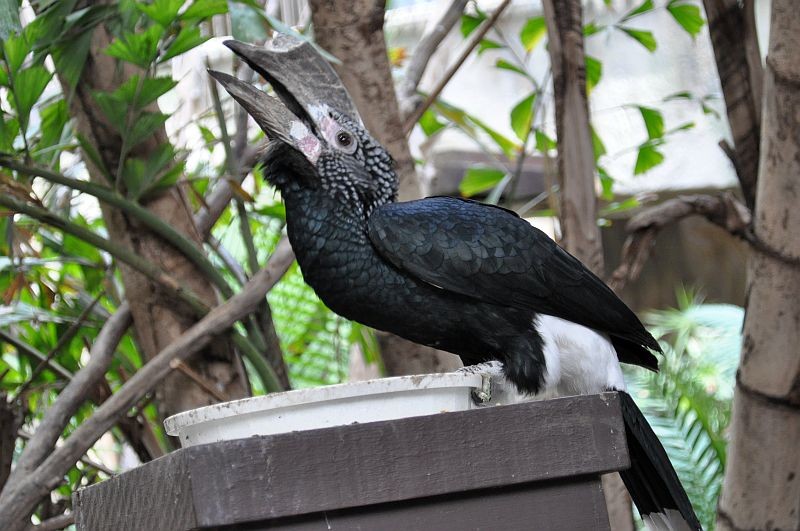Silvery-cheeked Hornbill
A species of Black-and-white-casqued Hornbills and Allies Scientific name : Bycanistes brevis Genus : Black-and-white-casqued Hornbills and Allies
Silvery-cheeked Hornbill, A species of Black-and-white-casqued Hornbills and Allies
Botanical name: Bycanistes brevis
Genus: Black-and-white-casqued Hornbills and Allies
Content
Description General Info
Description
It measures 75 to 80 centimetres (30 to 31 in) in length, and has a very large cream-colored casque on the beak. The head is silver-grey and the rest of the plumage is iridescent black, except for the white rump, lower back, thighs, vent and tip of the outer tail-feathers. The sexes are similar except the female has a smaller casque and reddish skin around the eyes. 
Size
70 cm
Life Expectancy
13 years
Nest Placement
Tree
Feeding Habits
Silvery-cheeked Hornbill consumes a varied diet including fruits, insects, small birds, rodents, reptiles, and centipedes. Its foraging technique involves seeking food in trees and on the ground, showcasing unique adaptations for consuming diverse food sources.
Habitat
Silvery-cheeked Hornbill predominantly inhabits montane and coastal evergreen forests, also found in gallery and riverine forests, as well as tall deciduous forests and woodlands. This species is adapted to high-altitude environments and can be found at elevations of up to 2600 meters. The broader geographical regions for this bird include various forested landscapes, emphasizing its preference for dense vegetation and significant tree coverage.
Dite type
Frugivorous
General Info
Feeding Habits
Bird food type

Fruit
Behavior
Usually they live in pairs and sometimes roost in flocks of hundreds of individuals. They breed in spring (September and October; at least in part of its range) and lay clutches of one to three white eggs, incubated for 40 days. The young remain with both parents for about 80 days. 
Species Status
Not globally threatened.
